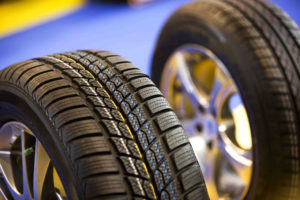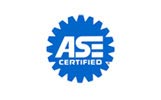Tips on When to Replace Your Tires
3 Easy Ways To Tell If The Tires On Your Car, Truck or SUV Need To Be Replaced Before It’s Too Late.
 Tires. Of all the most common problems with cars, tires are often the most overlooked. But, if your car doesn’t drive smoothly, wobbles, or makes curious noises at top speeds, it could be because of your tires. Your tires are where your car meets the road. They’re your car’s first and only touchpoint to the street. When they wear down, they can cause all kinds of wearing problems that can lead to more expensive repairs than simply replacing them would have been. Tires can be underinflated, overinflated, worn down, leaky, and more. While you don’t necessarily need to replace your tires to solve these common problems, there are plenty more scenarios when replacing your tires is the most cost-effective and safe thing you can do.
Tires. Of all the most common problems with cars, tires are often the most overlooked. But, if your car doesn’t drive smoothly, wobbles, or makes curious noises at top speeds, it could be because of your tires. Your tires are where your car meets the road. They’re your car’s first and only touchpoint to the street. When they wear down, they can cause all kinds of wearing problems that can lead to more expensive repairs than simply replacing them would have been. Tires can be underinflated, overinflated, worn down, leaky, and more. While you don’t necessarily need to replace your tires to solve these common problems, there are plenty more scenarios when replacing your tires is the most cost-effective and safe thing you can do.
Here are a few helpful tips from Greeley auto repair and tire experts:
The Penny Test
You may have heard of the ‘penny test,’ in which you insert an Abraham Lincoln penny into the tread groove of a worn tire. If the tread covers Lincoln’s head and you notice no adverse effects driving in snow, slush, or rain, you’re good to go. Mechanics test tires for remaining depth of tread grooves. When the remaining depth reaches 2/32 inches, it’s time for new tires.
You can do a penny test at home, obviously, but the main test you should pay attention to is how the car brakes and maneuvers on wet or slick roads.
What Are Tire Grooves for?
Tire tread grooves are mainly for managing wet conditions on the road. The treads direct water, snow, and ice away from the tires and out from under them. Driving on dry roads with worn-down or even bald tires won’t give you much trouble, usually. Just look at the racing slicks stock cars use in races.
If your tread is getting low, you might not notice a difference until you have to brake suddenly or you’re driving in wet or icy conditions. About nine percent of all collisions in the US are tire-related, according to the National Highway Traffic Safety Administration.
Which Tires Should You Buy?
That depends on the car and what you use it for. To help determine that, let’s run down a few tire terminology basics:
All tires have a speed rating, as denoted by the letters S (112mph) through Y (186mph). This is the tire’s maximum speed when carrying a load. Higher speeds require better grip. Aside from the speed rating, tires also come in different sizes, which are written like this: 215/60R16. The 215 in this example is the cross-section width, which is the widest distance from one sidewall to the other. The 60R is the ratio of sidewall height to tire width, and the 16 is the size of the wheel in inches. Most cars list recommended tire size and specifications in their owner’s manuals.
As for tire type, if you’re driving on rough roads often or carrying around large payloads, it’s a good investment to get a quality type of tire, or even a specialty tire that can help you in adverse conditions. Analyze how you use your car and how many miles it’s been since your last tire change to determine which kind of tires you need.
Looking for a trusted tire and mechanic shop in Greeley? Call us today.



